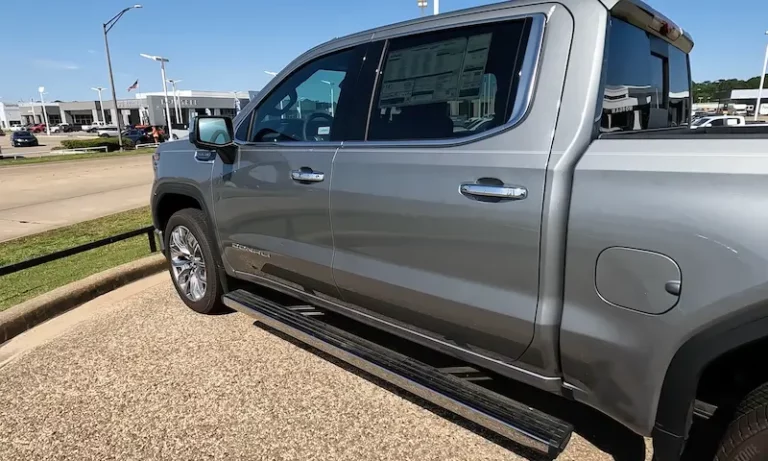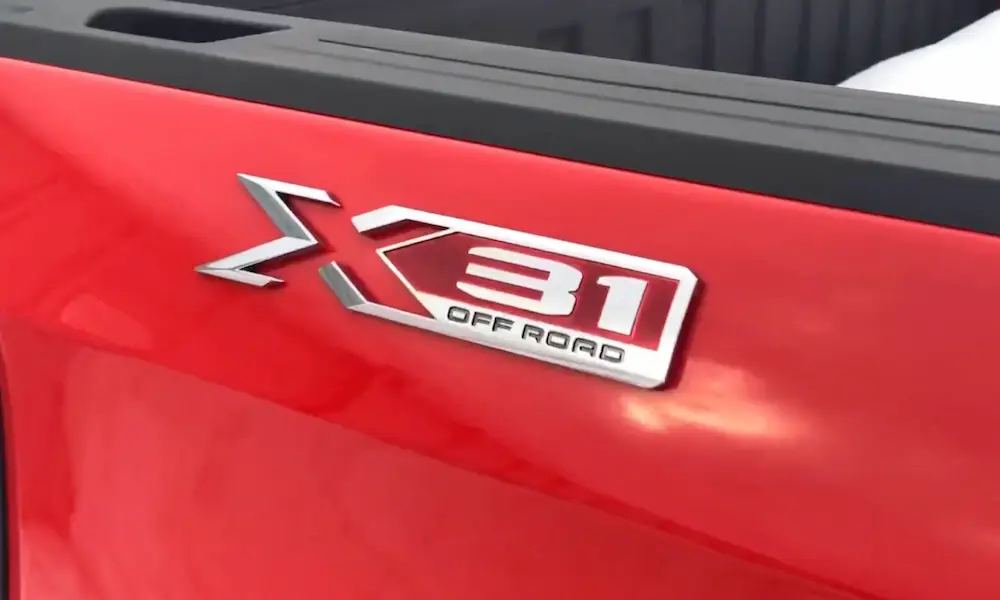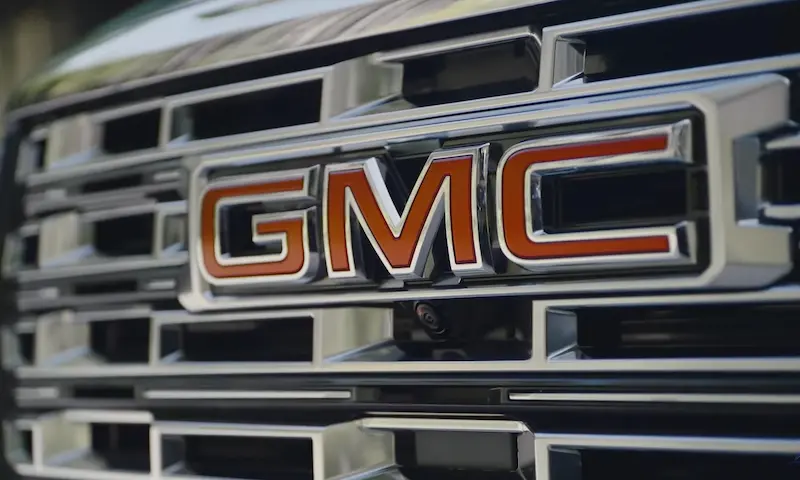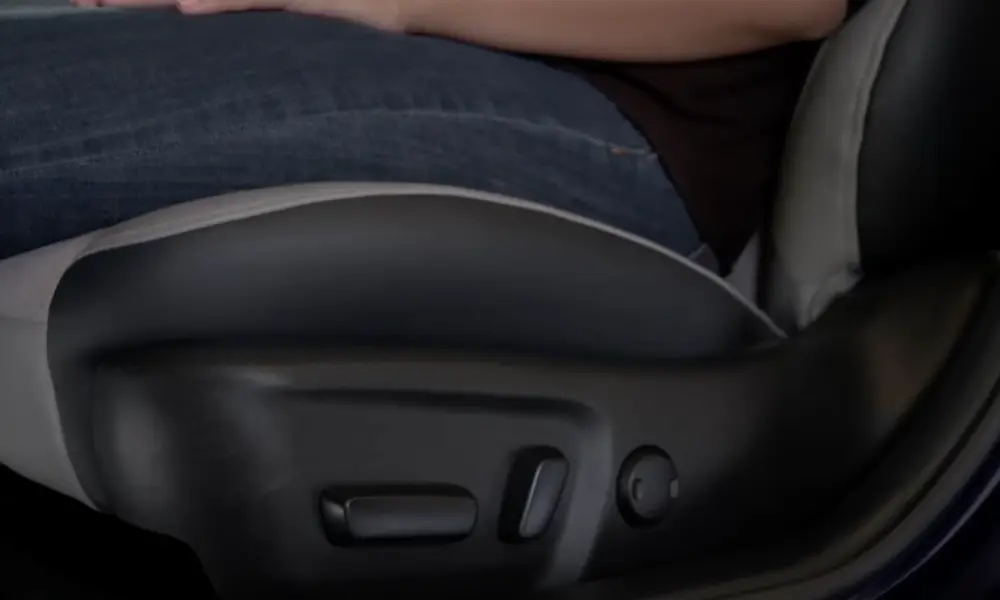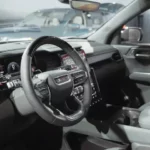Are your GM power running boards giving you headaches? You’re not the only one dealing with steps that refuse to extend, partially deploy before retracting, or make concerning noises. GM’s power running boards look sleek and offer great convenience when working properly, but they’ve become notorious for reliability issues across Silverados, Sierras, Tahoes, Suburbans, Yukons, and Escalades. I’ll walk you through the most common problems, what causes them, and what you can do to fix them – potentially saving you hundreds in unnecessary repairs.
What Are the Most Common GM Power Running Board Problems?
The moment you press your key fob or open your door, your power running boards should smoothly extend. Unfortunately, many GM owners experience these frustrating issues instead:
Partial Extension and Immediate Retraction
This is the most common complaint, affecting about 35% of troubled running boards. You open your door, the board starts to extend, then immediately retracts with a concerning noise from the motor. This “false start” behavior is particularly common in 2014-2019 Silverado and Sierra models.
According to customer reports, this symptom often begins intermittently before becoming a permanent failure.
Complete Deployment Failure
Many owners report their running boards remain completely stuck in the retracted position. You might hear the motor attempting to work, but nothing happens. This creates not just an inconvenience but a potential safety hazard, especially for shorter passengers or those with mobility challenges.
Slow or Delayed Operation
While properly functioning running boards deploy in 2-3 seconds, failing units might take 10-15 seconds or more. This delayed response is often the first warning sign of more serious issues developing in the mechanism.
“Ghost” Operation
Perhaps the strangest and most concerning issue is when running boards begin extending and retracting on their own – even when your vehicle is completely turned off. This phantom behavior can drain your battery and indicates serious control module problems.
One owner on a GMC forum reported: “My running boards would randomly deploy in my garage at night, making me think someone was breaking into my truck!”
What Causes GM Running Board Failures?
Understanding what’s happening behind the scenes can help you make smarter repair decisions:
Corroded and Seized Bushings (40% of failures)
The primary culprit behind GM running board problems is corrosion. The mechanism relies on stainless steel bushings that ride inside plastic bushings, and despite rubber seals meant to keep moisture out, corrosion inevitably develops.
This issue is especially prevalent in regions that use road salt during winter months. Once corrosion sets in, the bushings seize, causing strain on other components.
Motor Assembly Failures (25% of failures)
When bushings corrode, the motor works overtime trying to overcome the resistance. Eventually, the motor burns out or damages internal gears, resulting in grinding noises or complete failure.
Replacement motors from GM can cost $600-800, making this a particularly expensive repair when it could have been prevented with proper maintenance.
Control Module Issues (15% of failures)
Electronic problems account for many of the more puzzling behaviors like the “ghost operation” mentioned earlier. General Motors has issued multiple Technical Service Bulletins (TSBs) addressing these software issues.
For instance, TSB N222376580 specifically addresses running boards that reverse direction during deployment on nearly 68,000 vehicles.
Other Causes (20% of failures)
The remaining problems stem from:
- Accumulated road debris and mud (10%)
- Blown fuses (5%)
- Damaged wiring connections (5%)
How Much Do Running Board Repairs Cost?
Repair costs vary dramatically depending on the underlying issue:
| Repair Type | Cost Range | Success Rate | Difficulty |
|---|---|---|---|
| Cleaning & Lubrication | $50-150 | 40-50% | DIY Possible |
| Bushing Replacement | $200-400 | 70-80% | Moderate |
| Motor Replacement | $700-1,200 | 90% | Professional |
| Complete Assembly | $800-1,500 | 95% | Professional |
Your most cost-effective approach is starting with the simplest solutions and working your way up as needed.
How to Diagnose GM Running Board Problems
Before spending big money on repairs, try these diagnostic steps:
1. Check the Fuse
Many running board failures start with something as simple as a blown fuse. Check fuse #74 in the engine compartment fuse box—this 30-amp fuse controls the running board system. A replacement costs under $5 and resolves about 5% of all reported issues.
A helpful video tutorial shows exactly where to find this fuse and how to test it properly.
2. Verify Vehicle Settings
Some owners don’t realize their running boards have been disabled in the vehicle settings. Check your infotainment system under Settings > Vehicle > Power Running Boards to ensure they’re enabled.
3. Inspect for Debris and Damage
Get under your vehicle with a flashlight and inspect the running board mechanism. Look for:
- Obvious damage to components
- Accumulated mud, ice, or road debris
- Corrosion on metal parts
- Loose connections
As demonstrated in this repair video, simply cleaning out debris can sometimes restore functionality.
4. Listen for Motor Operation
When you open your door, listen carefully. If you hear the motor attempting to work but see no movement, you likely have a mechanical issue with bushings or linkage. If you hear nothing at all, the problem is more likely electrical or electronic.
DIY Fixes for GM Power Running Board Problems
Before calling a mechanic, try these solutions that have worked for many owners:
Basic Cleaning and Lubrication
This simple maintenance procedure can prevent many problems and sometimes restore function to struggling systems:
- Use a pressure washer or strong spray to remove debris from all mechanism parts
- Allow components to dry completely
- Apply a silicone-based lubricant to all pivot points and bushings
- Cycle the running boards multiple times to work the lubricant in
As shown in this maintenance guide, regular cleaning significantly extends running board life.
Reset the Running Board System
Many electronic glitches can be resolved with a simple reset:
- Disconnect the negative battery terminal for 10-15 minutes
- Reconnect the battery
- Start the vehicle and let it run for 2-3 minutes
- Test the running boards by opening and closing doors
This reset procedure forces the control module to reestablish proper communication with the vehicle’s systems.
Reprogramming Through TSBs
If your vehicle falls under one of GM’s Technical Service Bulletins, dealers may perform reprogramming at no cost. For example, TSB 22-NA-209 addresses running board inoperability on 2021-2023 Cadillac Escalade, Chevrolet Tahoe/Suburban, and GMC Yukon models.
When DIY Isn’t Enough: Professional Repair Options
When basic maintenance doesn’t resolve the issue, you’ll need to consider more extensive repairs:
Bushing Replacement
Replacing corroded bushings addresses the root cause of most mechanical failures. This repair typically costs $200-400 but provides excellent long-term results. The procedure involves:
- Removing extension arms
- Cleaning or replacing corroded bushings
- Installing new stainless steel and plastic bushing assemblies
- Applying anti-seize grease during reassembly
Motor Replacement
When motors fail, replacement becomes necessary. You have two options:
- OEM motors from GM dealers cost $600-800
- Aftermarket alternatives from companies like A-Premium cost $250-400
Labor adds another $200-400 to either option. A step-by-step video shows the complete replacement process.
Complete Assembly Replacement
In cases of extensive damage, replacing the entire running board assembly might be the most cost-effective solution. While expensive ($800-1500), this approach ensures all worn components are addressed simultaneously.
Preventive Maintenance: Avoiding Future Problems
An ounce of prevention is worth a pound of cure, especially with GM running boards:
Monthly Cleaning
During winter months or in muddy conditions, rinse the running board mechanisms monthly to prevent salt and debris buildup. Focus on pivot points and extension arms where corrosion typically begins.
Quarterly Lubrication
Apply silicone-based lubricant to all moving parts every three months. Avoid petroleum-based products that attract dirt and accelerate wear.
Winter Preparation
In areas with heavy road salt use, consider:
- More frequent cleaning during winter months
- Using a protective spray coating on mechanism components
- Some owners even disable their running boards during winter to prevent damage
Professional Inspection
Have a qualified technician inspect your running boards annually. Early intervention through bushing replacement or motor servicing costs significantly less than emergency repairs.
Model-Specific Considerations
Different GM vehicles have unique running board characteristics:
2014-2019 Silverado and Sierra
These first-generation designs have the highest failure rates. Owners report systems typically requiring overhaul by 60,000-80,000 miles, especially in harsh climates.
2020-2025 Models
Newer models benefit from improved sealing and updated control modules, but problems persist. Software updates address many electronic issues, but mechanical failures continue affecting these vehicles.
Heavy-Duty Models
The 2500HD and 3500HD trucks face additional challenges due to increased weight and more demanding service conditions. These vehicles place greater stress on running board components, accelerating wear.
Alternative Solutions
If you’re tired of dealing with running board problems, consider these alternatives:
Aftermarket Running Board Systems
Companies like AMP Research offer improved designs with better reliability. These systems typically cost $800-1200 but provide better long-term performance than OEM replacements.
Boost Auto Parts offers complete replacement systems with enhanced durability features.
Fixed Running Boards
Static, non-powered running boards eliminate all electrical and mechanical components while still providing step access. This simple solution costs $300-600 and never needs electronic repair.
Iron Bison Auto offers heavy-duty fixed running boards designed specifically for GM trucks.
Running Board Deletion
Some owners, particularly off-road enthusiasts, remove running boards entirely. This approach requires cosmetic modifications to cover mounting points but eliminates future repair costs.
Warranty and Legal Considerations
GM’s acknowledgment of widespread running board problems through multiple TSBs suggests potential warranty coverage for affected owners:
- Check if your vehicle falls under any of the published TSBs
- Even out of warranty, some dealerships offer “goodwill” repairs for known issues
- Extended warranty providers often specifically exclude running boards due to their known reliability issues
Some owners have successfully pursued warranty extensions for running board issues, particularly for vehicles with low mileage experiencing premature failures.
The Bottom Line on GM Running Boards
While GM’s power running boards offer great convenience when working properly, their design creates inherent reliability challenges. Regular maintenance is essential, and early intervention at the first signs of trouble can prevent more expensive repairs later.
For those purchasing a used GM truck or SUV with power running boards, factor potential repair costs into your buying decision. And for current owners, implementing a regular maintenance schedule is your best defense against the frustration of failing steps.
With proper care and realistic expectations, you can maximize the useful life of your running boards and minimize repair expenses along the way.

